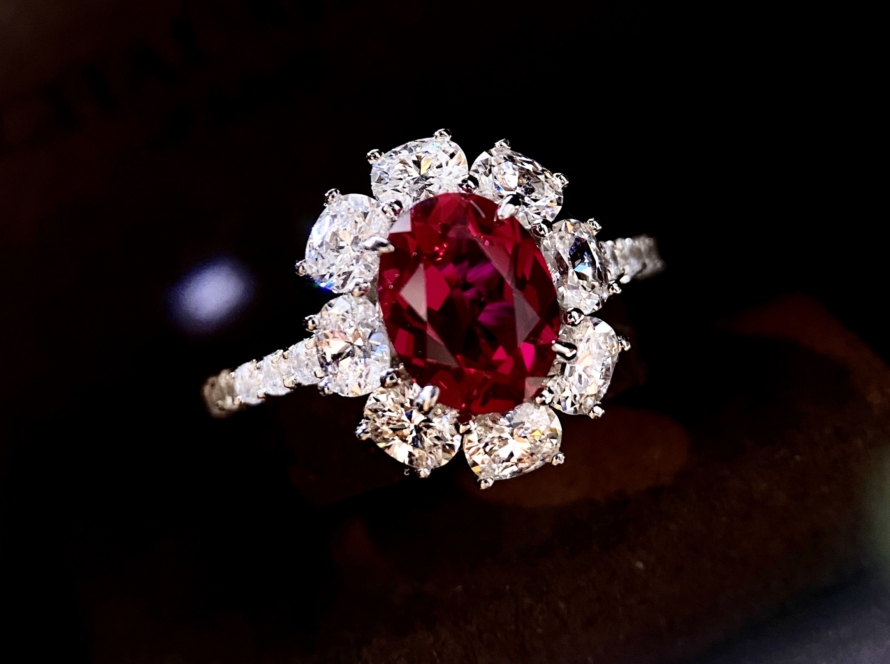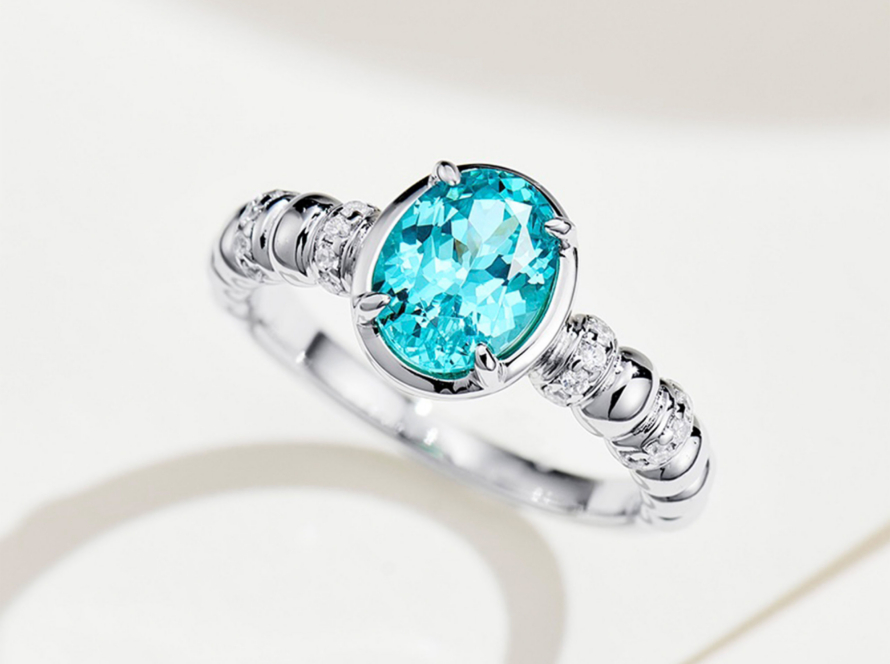Cubic Zirconia has been industrialized for mass production, with tens of thousands of carats produced within 48 hours. In contrast, moissanite requires months of high-temperature and high-pressure cultivation, resulting in significant production capacity constraints. Therefore, it is extremely rare in the market.
Color control flexibility:
Zirconia can be coated to produce 12 popular colors such as purple, blue, and pink, perfectly matching seasonal trends, while 90% of moissanite is colorless imitation diamond design, limiting its fashion adaptability.
1. Fundamental Differences
Moissanite is a lab-created silicon carbide with an impressive hardness of 9.25 on the Mohs scale, known for its intense “fire” that can outshine even diamonds. Cubic zirconia, also lab-grown, has a hardness of 8-8.5 and offers a more diamond-like brilliance—natural and refined.
2. Visual Appeal
Moissanite’s rainbow flashes are extremely noticeable, making it appear overly vibrant under bright light—some find this look too flashy. CZ, on the other hand, has a softer sparkle that closely mimics the elegant glow of a real diamond, making it ideal for everyday wear.
3. Price Comparison
Due to patented production methods, moissanite is significantly more expensive than CZ. Meanwhile, cubic zirconia delivers a diamond-like appearance at a much more affordable price, offering better value for money.
🫶Our Choice
After extensive testing and comparison, we found that cubic zirconia outperforms moissanite in natural appearance, wearability, and affordability. It captures the true essence of fine jewelry—radiant yet refined—without appearing cheap or gaudy.
If you appreciate “quiet luxury,” explore our CZ collection. We’re confident you’ll love its perfectly balanced sophistication.
Discover the beauty of understated elegance with our cubic zirconia jewelry. ✨

